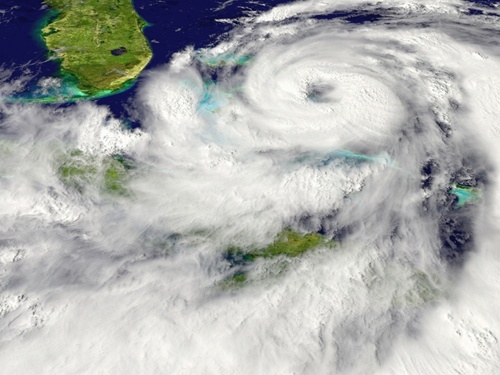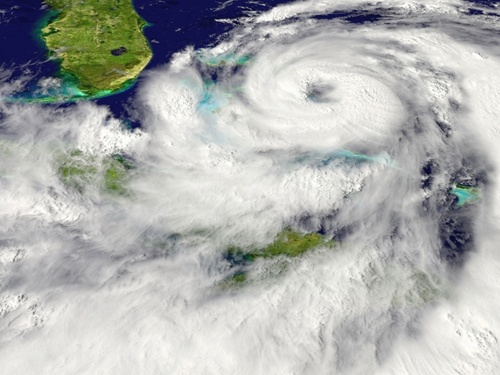
The recent flooding in the aftermath of Hurricane Harvey is once again putting a spotlight on the importance of disaster preparedness.
Businesses in a wide range of sectors need to plan ahead for disasters to ensure they can maintain operations and continue to serve customers. Beyond keeping revenues flowing, a disaster preparedness strategy can minimize the broad economic impact of a disaster, making it easier for commerce systems to recover after an emergency event.
Hurricane Harvey has caused incredible damage in Houston and the surrounding area as heavy, sustained rainfall has led to flooding. With Houston largely unavailable from a commerce perspective, businesses can no longer rely on their supply, transport and warehouse networks in the area. This type of disaster can be incredibly damaging to a business by limiting its ability to sustain its supply chain. However, a Forbes report explained that the one benefit of a hurricane is that businesses can see it coming. Not only are the storms seasonal, but meteorologists can usually provide a warning of a few days before a hurricane makes landfall. These factors allow businesses to prepare for a disaster event. The question that remains is “how?”
Three ways organizations can prepare for supply chain disruption are:
1. Establish a Contingency Plan and Take Time to Practice
The Forbes report said that part of why organizations can be ready for a disaster is that many businesses will establish plans for what they will do if their supply chain is disrupted. The plans are designed to cover every possible disaster in the locations where the supply chain operates and includes alternative processes and procedures that can go into practice in the event of an emergency. These documents can be hundreds of pages long. They will also typically designate specific responsibilities to different workers, making it vital to get everybody on board.
Supply Chain Digital echoed the need to have a plan in place prior to a disaster, and told the story of how DHL was able to withstand one emergency because it had an alternative system in place. The shipping giant, like many organizations, depends heavily on air travel to move items around the world. A few years ago, when the Icelandic volcano Eyjafjallajokull erupted, many companies were forced to delay orders, cancel flights and slow business because a cloud of ash made common air travel routes impassable. DHL avoided this problem because it had planned for alternative freight methods in the event of a disaster and was able to enact the strategy when signs of an eruption began to emerge. Similar warning signs are happening again, by the way, and many experts believe the volcano Katla, which is the largest in the country, is ripe for an eruption.
Of course, having a plan in place is only the beginning. The complexity of these disaster strategies means organizations can’t expect them to go smoothly at the spur of the moment, when the business is scrambling. Instead, companies should practice by simulating disaster events in the supply chain and enacting the plan. Don’t rely on a good strategy alone – make sure employees are prepared to act.
2. Establish Remote Management
Imagine you are working at a warehouse when a tornado strikes near a partner facility the next state over. You are able to get a hold of your colleagues at the other facility via smartphone, but you discover the twister took out power and internet. Services are expected to remain unavailable for more than a day as utilities work to make repairs and get local mission-critical services up first. The problem is, that warehouse holds your organization’s primary enterprise resource planning database and warehouse management systems. Essentially, the tornado has rendered most of your work useless because you can’t coordinate with the other warehouse.
This may be an extreme example, but lost connections over extended periods are common problems when natural disasters strike. A Utility Dive report detailing the longest power outages of 2012 – the year when Hurricane Sandy devastated parts of the east coast – showed the six longest outages of the year were all caused by the hurricane. The shortest of the top six took place in Eastern Pennsylvania and lasted almost 224 hours. It took nearly 2,000 workers and contractors nine days to restore power to more than 270,000 people impacted by the event. The longest outage took place in Long Island, New York, where more than 632,000 people were left without power for 336 hours.
Hurricanes and other large-scale storms aren’t the only events that lead to extended outages. A large thunderstorm impacting Maryland and West Virginia caused an almost 193-hour outage that affected 145,000 people. Hurricane Harvey has left hundreds of thousands of people without power in Houston and along the Texas Coast, CNBC reported, and this is in a region that frequently faces extreme weather and has a utility grid designed to withstand emergency events.
Businesses can’t afford to have their warehouses shut down because the technology systems they work with are housed in facilities that have lost power. Furthermore, asking employees to revert to paper processes or manual data entry during a disaster will slow productivity to a crawl at a time when functional warehouses will need to be more efficient than normal. Remote management systems featuring mobile data collection tools allow companies to sustain operations at facilities, even when they can’t connect to central platforms, and synchronizes data when all locations are available.
3. Digitize the Supply Chain
Responding to a disaster requires flexibility and adaptability within an organization. Paper-based processes or rigid, manual data management strategies undermine this elasticity. Organizations preparing for a disaster can use digital supply chain management systems to create new data workflows and enact them automatically in the event of an emergency. This process is easier if companies establish mobile data collection systems that can integrate with enterprise resource planning systems.
ERP becomes especially important in a disaster as it can keep teams connected, provide transparency into asset visibility and allow companies to more readily track inventory levels across multiple facilities. For example, if a production run is expected to start in three days and a warehouse that just went down due to a disaster was meant to send a part to your location, the ERP system can identify the problem, alert managers and provide insights into the most efficient way to get the necessary part. The solution may be as simple as using a part at the local facility and ordering more supplies from a vendor earlier than expected. These simple solutions to supply chain disruption are possible with complete visibility into operations.
Disasters can strike at almost any time, disrupting the entire economy as regions come together to save lives, bring critical services online and get everything up and running again. Businesses can’t afford to let their supply chains fall apart due to a geographically isolated disaster. Proper planning can go a long way in helping organizations prepare for emergencies, and digitizing the supply chain is a key step in the process. Effective data collection and management can combine with effective preparation to create a resilient supply chain capable of withstanding emergency situations.






